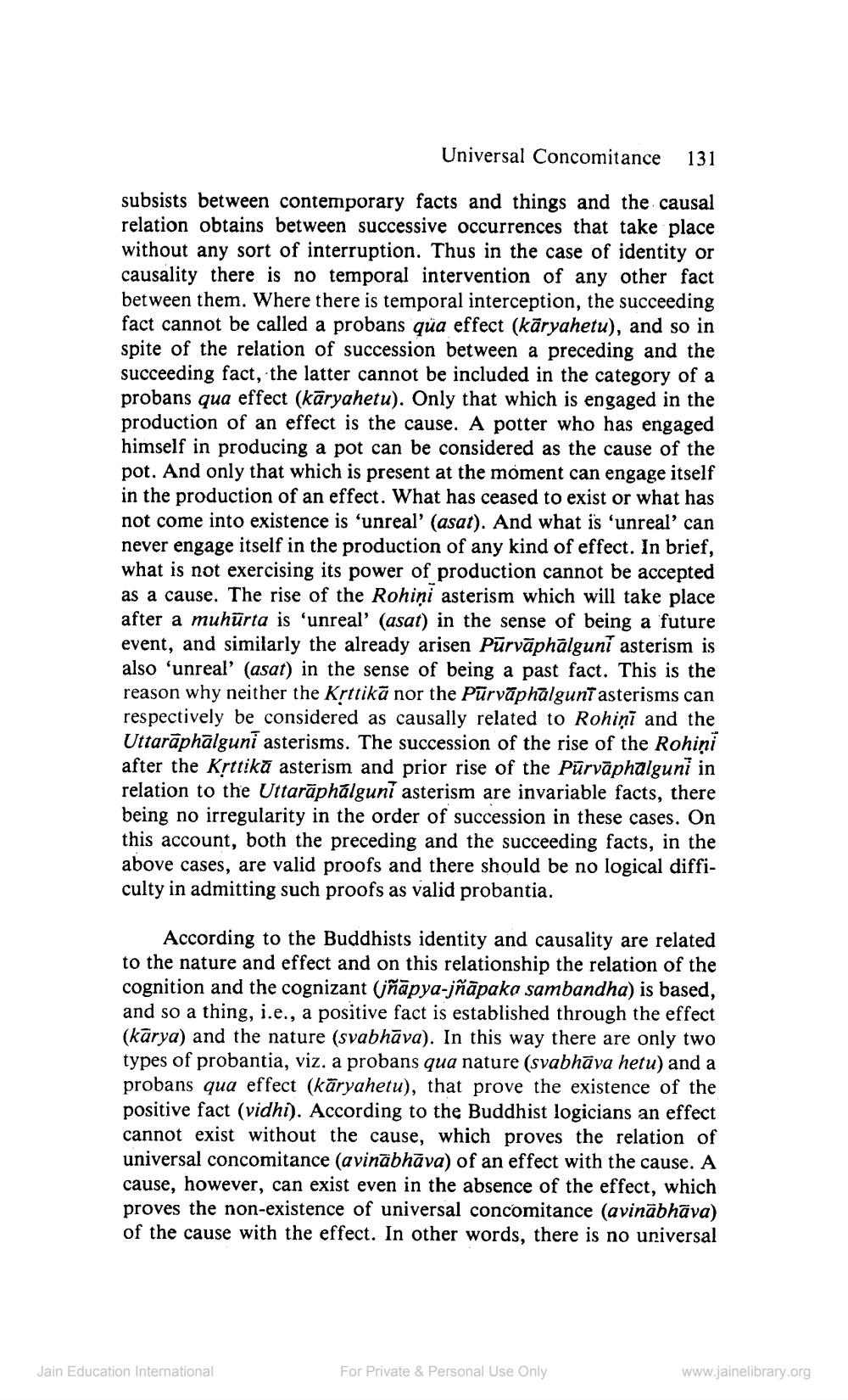________________
Universal Concomitance
131
subsists between contemporary facts and things and the causal relation obtains between successive occurrences that take place without any sort of interruption. Thus in the case of identity or causality there is no temporal intervention of any other fact between them. Where there is temporal interception, the succeeding fact cannot be called a probans qüa effect (kāryahetu), and so in spite of the relation of succession between a preceding and the succeeding fact, the latter cannot be included in the category of a probans qua effect (kāryahetu). Only that which is engaged in the production of an effect is the cause. A potter who has engaged himself in producing a pot can be considered as the cause of the pot. And only that which is present at the moment can engage itself in the production of an effect. What has ceased to exist or what has not come into existence is ‘unreal' (asat). And what is ‘unreal' can never engage itself in the production of any kind of effect. In brief, what is not exercising its power of production cannot be accepted as a cause. The rise of the Rohiņi asterism which will take place after a muhurta is 'unreal' (asat) in the sense of being a future event, and similarly the already arisen Pūrvāphālguni asterism is also 'unreal' (asat) in the sense of being a past fact. This is the reason why neither the Krttikā nor the Pūrvāphalgunī asterisms can respectively be considered as causally related to Rohiņi and the Uttarāphālguni asterisms. The succession of the rise of the Rohini after the Kșttikā asterism and prior rise of the Pūrvāphalguni in relation to the Uttarāphálguni asterism are invariable facts, there being no irregularity in the order of succession in these cases. On this account, both the preceding and the succeeding facts, in the above cases, are valid proofs and there should be no logical difficulty in admitting such proofs as valid probantia.
According to the Buddhists identity and causality are related to the nature and effect and on this relationship the relation of the cognition and the cognizant (jñāpya-jñāpake sambandha) is based, and so a thing, i.e., a positive fact is established through the effect (kārya) and the nature (svabhāva). In this way there are only two types of probantia, viz. a probans qua nature (svabhāva hetu) and a probans qua effect (kāryahetu), that prove the existence of the positive fact (vidhi). According to the Buddhist logicians an effect cannot exist without the cause, which proves the relation of universal concomitance (avinābhāva) of an effect with the cause. A cause, however, can exist even in the absence of the effect, which proves the non-existence of universal concomitance (avinābhāva) of the cause with the effect. In other words, there is no universal
Jain Education International
For Private & Personal Use Only
www.jainelibrary.org




